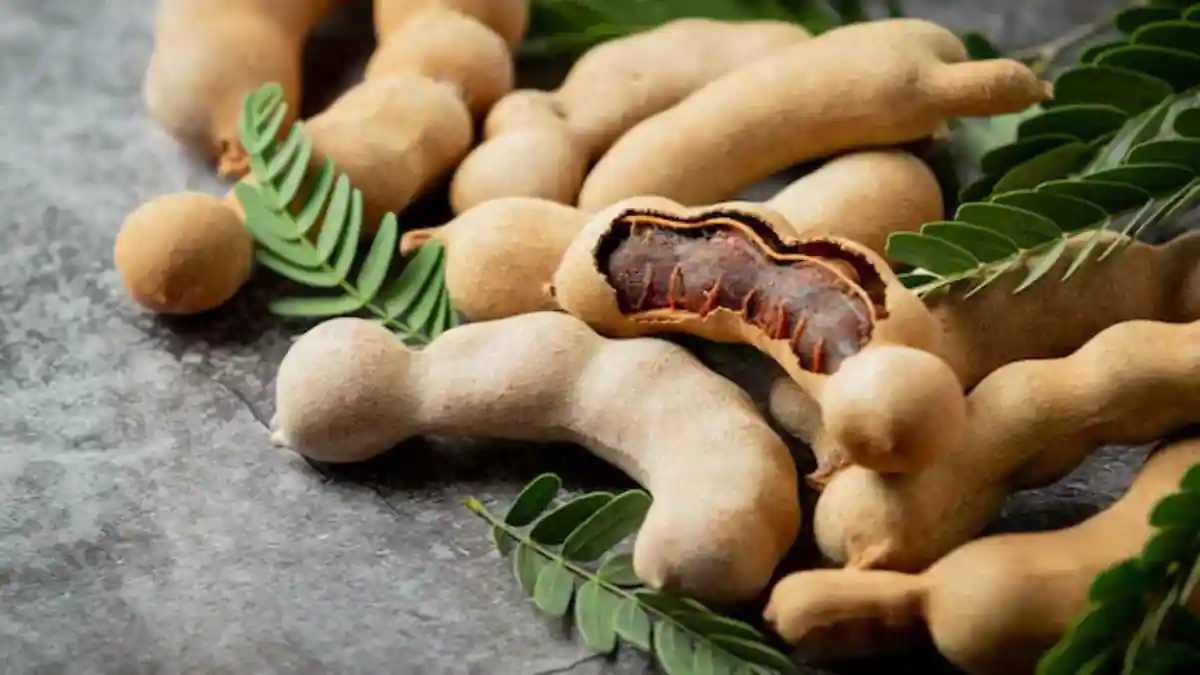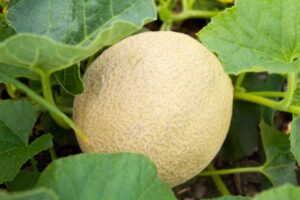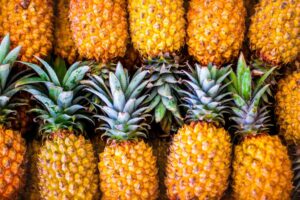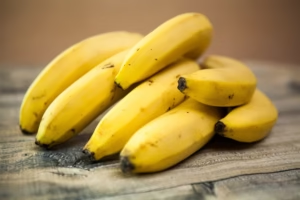How to Grow and Care for Tamarind: A Complete Guide
Tamarind (Tamarindus indica) is a versatile tropical tree that produces sweet-sour pods used in cuisines worldwide. Whether you’re looking to grow this magnificent tree in your backyard, in a container, or in a greenhouse, this comprehensive guide will walk you through everything you need to know about cultivating and caring for tamarind in the United States.
Understanding Tamarind
Native to tropical Africa, tamarind has become an essential ingredient in Asian, Middle Eastern, and Latin American cooking. In the US market, demand for fresh tamarind continues to grow as more Americans discover its unique flavor profile and versatility in cooking.
The tamarind tree is a long-lived, medium-growth tree that can reach heights of 80 feet in ideal conditions. However, with proper care and pruning, you can successfully grow tamarind trees in containers or maintain them at a manageable size in your garden.
Climate Requirements for Growing Tamarind in the US
Tamarind thrives in tropical and subtropical climates. In the United States, you can successfully grow tamarind outdoors year-round in:
- USDA Hardiness Zones 10-11 (Southern Florida, parts of Southern California, Hawaii)
- Zone 9 areas with protection during occasional cold snaps
According to the USDA Agricultural Research Service, tamarind trees can tolerate brief exposure to temperatures as low as 28°F (-2°C), but sustained cold will damage or kill the tree.
If you live in cooler regions, don’t worry—tamarind can be grown in containers and moved indoors during winter months.
Growing Tamarind from Seed
Starting tamarind from seed is surprisingly easy and rewarding. Here’s how to do it:
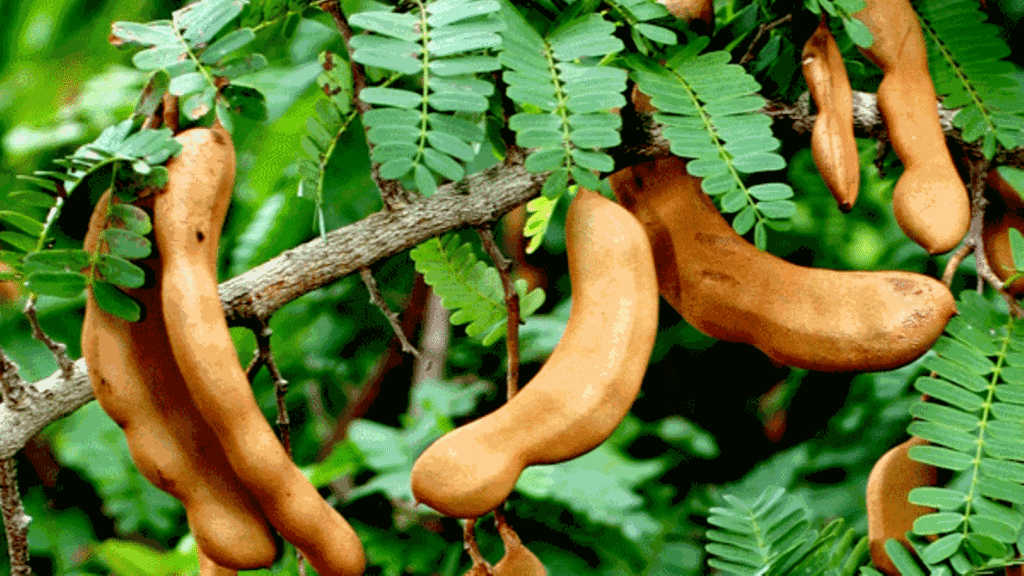
Seed Preparation
- Purchase fresh tamarind pods from specialty grocers or online suppliers
- Extract the seeds from the pulp and rinse thoroughly
- Soak the seeds in warm water for 24 hours to soften the hard seed coat
- Optional: Gently nick the seed coat with a file to improve germination rates
Planting the Seeds
- Fill small pots (4-6 inches) with well-draining potting mix
- Plant seeds 1/2 to 1 inch deep
- Keep soil consistently moist but not waterlogged
- Place in a warm location (75-85°F/24-29°C)
- Expect germination in 7-14 days
Seedling Care
Once your tamarind seeds have germinated:
- Provide 6+ hours of direct sunlight daily
- Water when the top inch of soil feels dry
- Begin fertilizing with diluted liquid fertilizer after the first set of true leaves appears
- Repot when roots begin to emerge from drainage holes
Container Growing
Tamarind makes an excellent container plant, allowing growers in cooler regions to enjoy this tropical treat. Here’s how to grow tamarind in pots:
Container Selection and Preparation
Select a large container (minimum 15-20 gallons) with excellent drainage. Tamarind has a deep taproot, so deeper containers are better than wider ones.
Potting Mix Recipe
Create a well-draining mix with:
- 40% high-quality potting soil
- 30% coarse sand or perlite
- 20% compost
- 10% coconut coir
Container Care Requirements
| Care Aspect | Requirements |
|---|---|
| Sunlight | 6-8 hours of direct sunlight daily |
| Watering | Deep watering when top 2 inches of soil dries out |
| Fertilization | Balanced slow-release fertilizer (10-10-10) every 3 months |
| Winter Care | Move indoors when temperatures drop below 40°F (4°C) |
| Pruning | Annual pruning to maintain size and shape |
| Repotting | Every 2-3 years or when rootbound |
Planting Tamarind Outdoors
If you live in a suitable climate, growing tamarind outdoors can result in a magnificent tree that provides shade, ornamental value, and delicious fruit.
Site Selection
Choose a location with:
- Full sun exposure
- Protection from strong winds
- Well-draining soil
- At least 30 feet from other trees or structures (tamarind can grow quite large)
Planting Steps
- Dig a hole twice the width and same depth as the root ball
- Mix native soil with compost at a 70:30 ratio
- Place tree in hole with the top of the root ball level with surrounding soil
- Backfill with soil mixture and firm gently
- Create a watering basin around the tree
- Water thoroughly and apply 2-3 inches of mulch, keeping it away from the trunk
Ongoing Tamarind Tree Care
Watering Schedule
- Young trees: Water deeply twice weekly for the first year
- Established trees: Water deeply once weekly during dry periods
- Winter: Reduce watering frequency by half
Fertilization Program
Tamarind trees are not heavy feeders but benefit from regular fertilization:
- Year 1-2: Apply balanced fertilizer (10-10-10) quarterly
- Established trees: Apply once in early spring and once in mid-summer
- Container plants: Use half-strength liquid fertilizer monthly during growing season
Pruning and Training
Tamarind responds well to pruning:
- Remove dead, damaged, or crossing branches annually
- For container plants, prune to maintain desired size and shape
- Best time to prune is late winter/early spring before new growth emerges
Common Pests and Diseases
Tamarind is generally pest-resistant, but watch for:
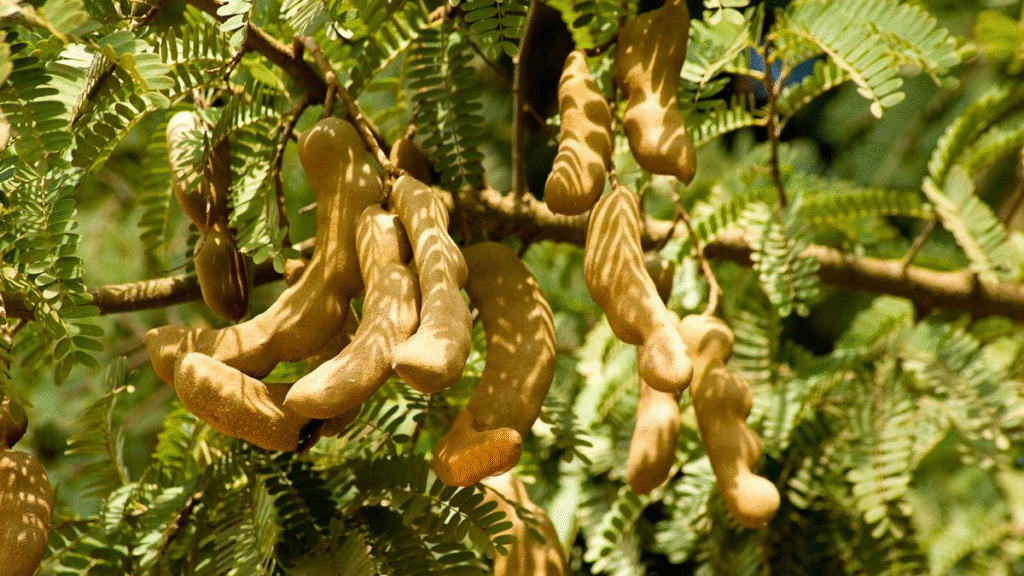
Pests
- Scale insects
- Mealybugs
- Spider mites (particularly on indoor plants)
Diseases
- Root rot (from overwatering)
- Powdery mildew (in humid conditions with poor air circulation)
Treat pest issues promptly with insecticidal soap or neem oil. Prevent diseases by ensuring proper spacing, drainage, and air circulation.
Harvesting Tamarind
Patience is key—tamarind trees grown from seed typically begin producing fruit after 7-10 years, though grafted specimens may produce earlier.
When to Harvest
Tamarind pods are ready to harvest when:
- The pods turn from green to brown
- The shell becomes brittle
- The pulp inside darkens and becomes sticky
How to Harvest
- Gently twist and pull ripe pods from branches
- For tall trees, use a long-handled fruit picker
- Store harvested pods in a cool, dry place for up to several months
Using Your Tamarind Harvest
Your homegrown tamarind has countless culinary applications:
Fresh Uses
- Add to curries, stews, and sauces
- Make refreshing tamarind juice or tea
- Create homemade tamarind paste for cooking
- Use in marinades for meat and fish
Preservation Methods
- Freeze pulp in ice cube trays for easy portioning
- Dehydrate and store in airtight containers
- Make tamarind jam or chutney
Growing Tamarind as a Business Opportunity
With the US market for ethnic and specialty foods expanding rapidly, growing tamarind can be more than just a hobby. The USDA Foreign Agricultural Service reports increasing imports of tamarind products, indicating strong market potential for domestic growers.
Consider these business opportunities:
- Selling potted tamarind plants to gardeners
- Providing fresh tamarind pods to specialty markets and restaurants
- Creating value-added products like tamarind candy, paste, or sauce
Regional Growing Tips
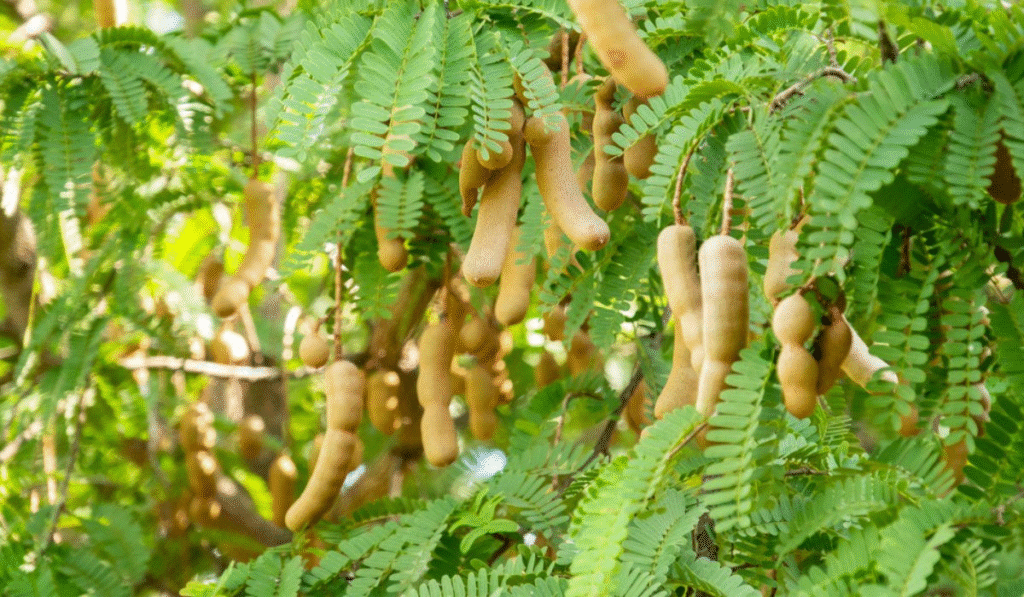
Southern Florida
- Plant directly in the ground in well-draining sandy soil
- Protect young trees from occasional cold snaps with frost cloth
- Monitor for Caribbean fruit fly, which can affect tamarind in this region
Southern California
- Choose locations with afternoon shade in hottest inland areas
- Amend clay soils heavily with sand and compost for better drainage
- Watch irrigation carefully during drought restrictions
Northern States
- Grow exclusively in containers that can be moved indoors
- Provide supplemental lighting during winter months
- Maintain humidity indoors with pebble trays or humidifiers
Conclusion
Growing tamarind in the United States requires some understanding of its tropical nature and care requirements, but the rewards are well worth the effort. Whether you’re cultivating a potted specimen for your patio or planting an orchard for commercial production, this versatile tree offers beauty, shade, and culinary treasures.
By following the guidance in this article, you’ll be well on your way to successfully growing and enjoying your own tamarind harvest. Remember that patience is key—tamarind is a slow-growing tree that improves with age, potentially providing fruit and enjoyment for generations to come.
